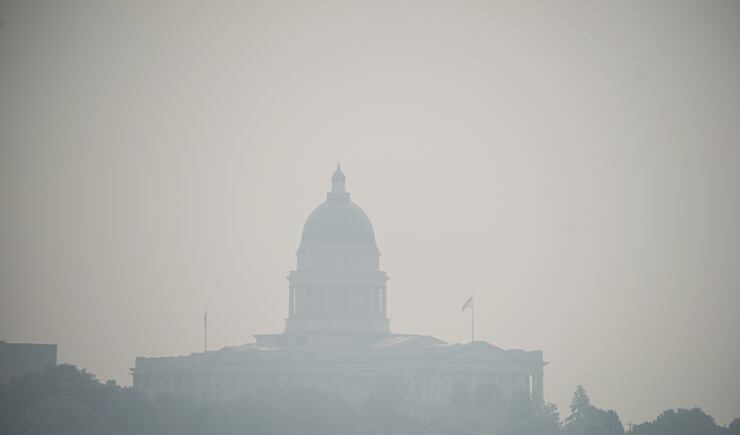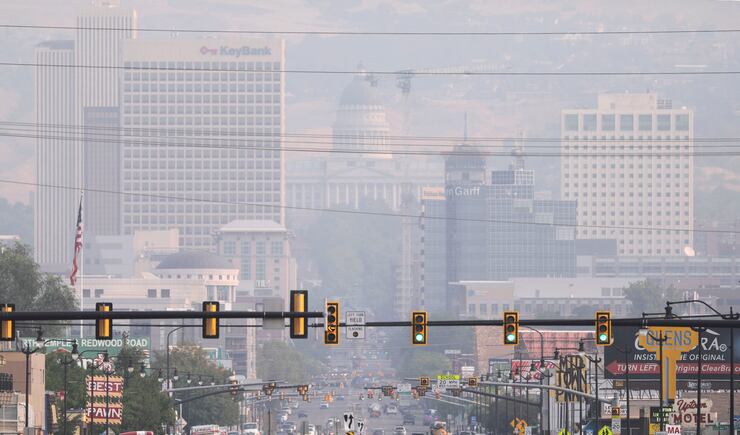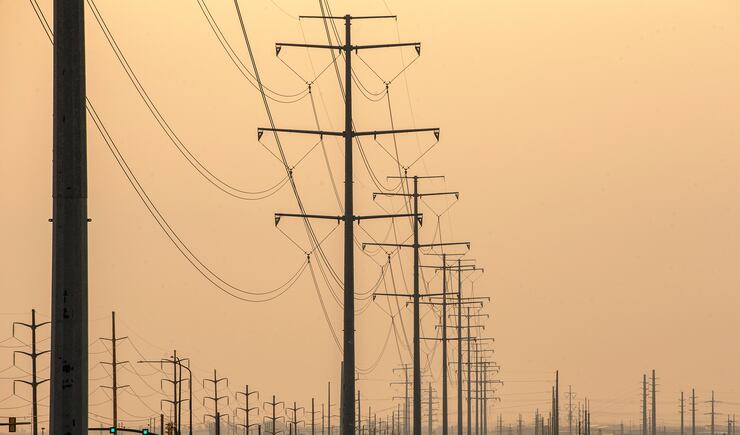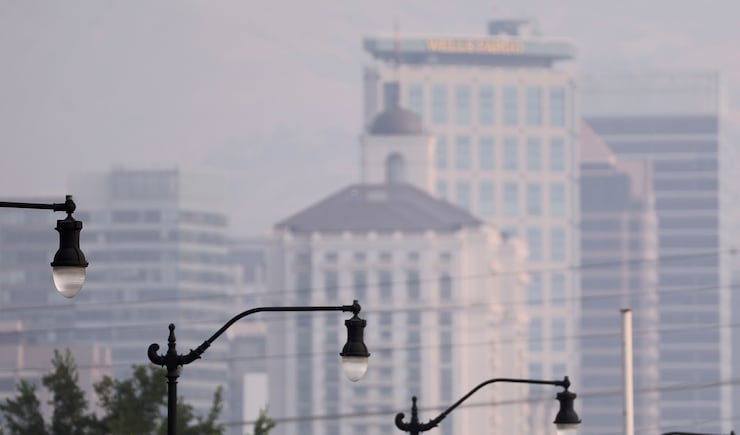SALT LAKE CITY — Unhealthy pollution that normally affects northern Utah during the winter is besieging the region at extraordinary levels due to ugly, thick smoke drifting in from California wildfires.
A real time loop mapping the invasion of the pollution was released by the National Oceanic and Atmospheric Administration and shows just how intense this event is. Or you can just look out the window and miss the mountains you’d normally see.
While there is smoke from Utah wildfires that is having an impact, the federal agency’s atmospheric mapping shows the steady march of pollution across the West into Utah from California.
That smoke is driving up levels of fine particulate pollution — which is 30 times smaller than a hair from your head — beyond the federal threshold of 35 micrograms per cubic meter in some Utah counties at stunning levels.
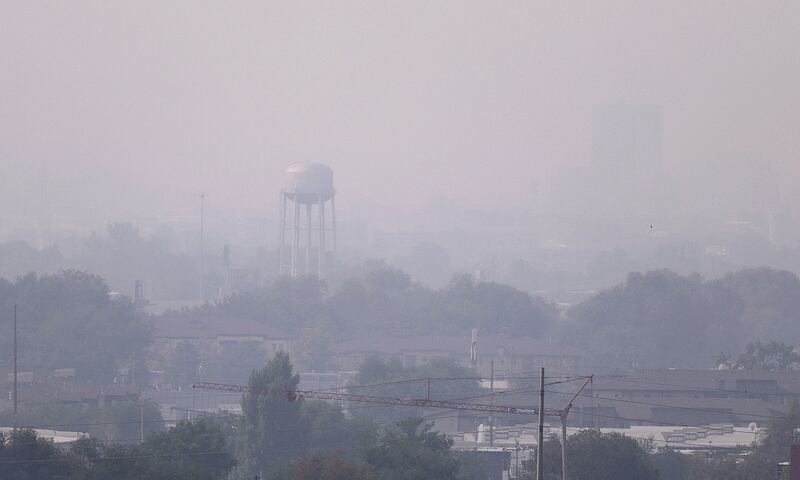
Consider the measurements Friday afternoon in Wasatch Front counties: Salt Lake County, 47.7; Tooele, 74.7; Weber, 47.5; Davis, 87.2; and Cache County, 91.9.
It’s not a pretty picture, especially in the time of a pandemic.
“One of the things I worry about are the health impacts of the air quality making COVID-19 symptoms worse and also conversely, people may be experiencing symptoms from air quality that may mask symptoms from COVID-19,” said Logan Mitchell, a research assistant professor in the University of Utah’s Department of Atmospheric Sciences.
Mitchell added that the people concerned about the health impacts and researchers should be keeping a close eye on the pattern of the drift’s movement.
”What is really interesting about this particular event is Salt Lake City is right on the edge on this huge plume of smoke. It will be really interesting to see how weather patterns move the plume. ... It is a good case for people to be watching the real-time data, especially looking at the maps of air quality, and it is changing really rapidly.”
As an example, because of the direction of the drift, Utah County seems to have escaped some of the brunt of the pollution invasion, but was still registering at 33.8 Friday afternoon, just below the federal threshold.
That wildfire smoke blanketing parts of northern Utah is on top of regular ozone pollution that attacks lungs in the summertime along the Wasatch Front.
The threat to public health from so-called “smoke waves” was explored in a 2016 study that looked at days in the western United States that exceeded federal standards for fine particulate pollution from 2004-2009 and found that wildfire smoke contributed 71.3% of that PM2.5.
In the study, it predicted even more dire impacts from smoke waves due to a changing climate bringing warmer temperatures and drier conditions, estimating that more than 82 million people will experience a 57% and 31% increase in the frequency and intensity, respectively, from smoke waves.

Jared Mendenhall, spokesman for the Utah Division of Air Quality, said people with asthma and preexisting heart conditions should especially take note of the smoke-filled air and stay indoors as much as possible.
“It is a one-two punch for air quality issues out there,” with ozone and fine particulate pollution attacking the area on both fronts, Mendenhall said.
He stressed that the ugly California smoke will stick around through the weekend, made worse from a wildfire on the border of Idaho and Utah that will continue to deliver harmful pollution.
When will it end?
With Utah’s hot temperatures and stagnant weather, it is a case of holding your breath. Literally.
